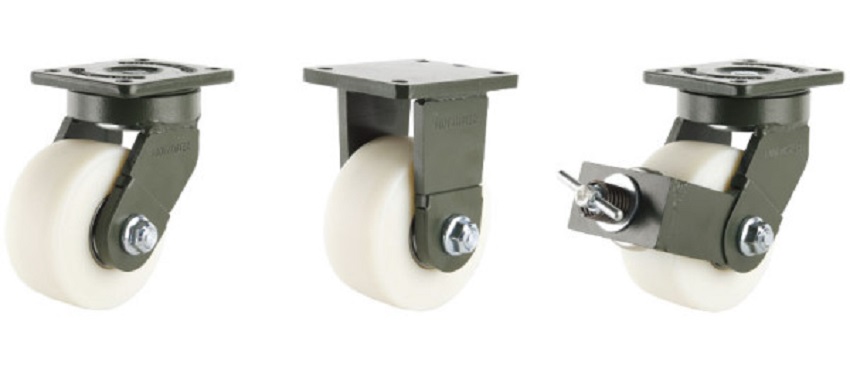
30 Dec 10 Facts You Should Know About Heavy-Duty Swivel Caster
A heavy-duty swivel caster is a must if you move heavy objects around your home or business. But there are many things you need to know before you buy one.
Stem mount casters
Having equipment on casters reduces strain on the back and legs and the risk of causing damage to floors, doors, and shelves. In addition, casters are an excellent choice for moving items around the office, kitchen, or garage.
There are many types of casters. A good quality swivel caster will roll smoothly on any surface and provide excellent maneuverability. These casters are available in various designs and are priced to fit your budget.
Stem mount casters are used to raise equipment off the floor. They can be used in conjunction with structural framing. There are two types of stem mount casters: threaded and grip rings. Both are crafted from sturdy metals rated to carry up to 300 lbs of weight.
Locking mechanism
Generally, the locking mechanism of a heavy duty swivel caster allows the caster to remain locked in a stable, trailing position when engaged with a stationary object. It will enable a user to move a cart or equipment in any direction quickly. The locking mechanism can also be transferred to an inoperative position, allowing the user to release the locking mechanism. The locking mechanism can be used in several ways, depending on the specific application.
A shaft, a retention spring, and a locking member are all parts of the locking mechanism. A rotating sleeve makes up the locking element and makes actuation easier. The sleeve is constructed from a sturdy, non-skid material. The shaft is a vertically extending part that is supported by a bracket. It is preferably formed integrally with the depending side portions.
Kingpinless swivel sections
Using kingpin-less swivel sections on heavy-duty swivel casters provides several benefits. These advantages include increased durability and higher radial force resistance. These casters also offer a cost-effective alternative to traditional towing casters.
Traditional swivel casters are made of a kingpin, a lower race, and an upper race. These parts aid in wheel pivoting and distribute weight over the swivel portion. Using these components in a hostile environment increases their risk of harm. Selecting the right caster for the job is crucial to avoid damage.
In a traditional swivel caster, the kingpin is a bolt or rivet. It acts as a connecting point between the swivel section and the top plate. The kingpin can become strained over time and may cause the caster to fail. The kingpin can also be deformed, which can cause damage to the ball bearings.
Manufacture and design flaws
Traditionally, a heavy-duty swivel caster is designed to provide directional control for carts. The caster consists of five components. The kingpin, a rivet or bolt, holds the other four parts together. It transmits the force from the caster and serves as a hinge to allow the caster to swivel.
A kingpin less design caster swivel section is a simplified version of the traditional swivel section. It is built with ball bearings and a forged outer race. This design eliminates the need for a kingpin but has limitations.
The kingpin’s design caster swivel is less expensive to manufacture and maintain than the traditional swivel section. It swivels much easier. However, it requires a swivel restrictor to be inserted into the raceway. In addition, a kingpin design caster swivel may only be suitable for some applications.
Load Capacity
Whether moving large equipment or storing it, you’ll need heavy-duty swivel casters to help you safely and efficiently get the job done. You’ll need to know your casters’ load capacity to ensure you’re getting the right size for your project. In addition, it will keep you from causing injury or downtime.
The load capacity of a heavy-duty swivel caster is calculated by dividing the total weight of the device by the number of casters. You should have at least six casters if you’re moving heavy equipment. But you may need more.
Some heavy-duty casters feature ball bearings, which can increase load capacity by up to 25%. It can be helpful, but it’s important to note that ball-bearing casters can also reduce load capacity.

No Comments